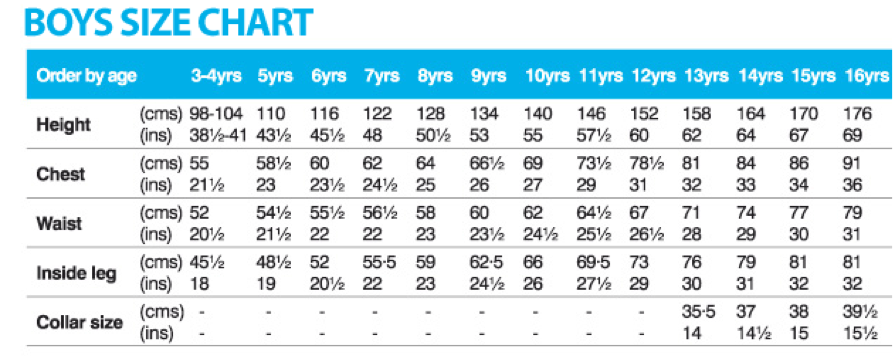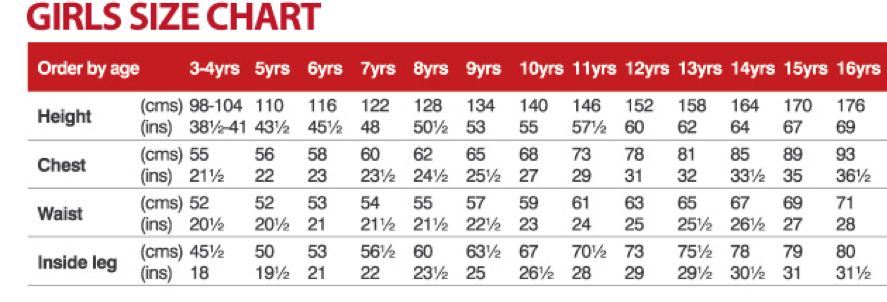We use cookies to make your experience better.
To comply with the new e-Privacy directive, you agree to the privacy policy and our use of cookies.
Sizing & Garment Care
GENERAL ADVICE:
Washing: Always follow the manufacturer's garment care guidelines as labelled before washing. It is advisable to wash knitwear inside out.
Ironing: Make sure your iron is set to the correct temperature as given on the garment care label. Many school uniform garments are 'easy care' and do not need ironing, refer to the manufacturer's label for drying instructions to get the best finish from these items. Printed garments should not be ironed over the printed area.
Tumble drying: Always follow the manufacturer's garment care guidelines as many garments are best left to dry naturally. Never tumble dry a pleated garment as this can reverse the heat treated pleating process - always hang up on a suitable hanger to air dry.
Fabric conditioner: We advise not to use fabric conditioner as many garments are specially coated for easy care and fabric conditioner interferes with this process.
Iron-on labels: These do not adhere to stretchy fabrics. Only affix to garments you can iron and remember to put a layer e.g. a handkerchief, between the clothing and the iron to avoid scorch marks.
DEALING WITH PILLING & BOBBLING
Knitted goods are prone to pilling, some more than others. The main reason is friction or rubbing against another object and this does not necessarily mean that the garment is faulty. Pilling can be caused by any of the following:
• External friction that is movement against another fabric or object
• Heat generated by the individual when the garment is worn
• Washing the garment at the incorrect temperature and/or with other fabrics that will rub against the garment
• Tumble drying the garment at too high a temperature, which causes the heat to draw out the fibre.
Some garments appear to have 'fluffed up' after a short period of wear and this is due to surface fibre from the yarn coming to the surface. The yarn in these cases is slightly hairier than usual and the hairs disappear after a period of wear and washing. This is similar to a carpet, where when first laid, the loose fibres come to the surface and are vacuumed away. If the fibres do not wash away, various devices can be used to remove the excess fibre to enhance the look of the garment. Once the fibre is removed the garment is unlikely to pill again. Check that bags and outerwear do not have any exposed velcro fastenings which may cause damage to garments worn beneath them.
In this case the best solution is to turn garments inside out when washing. When pilling occurs it should settle down after washing a number of times. However, if pilling is excessive, please feel free to speak to us for inspection.
It is important to know the sizes before you place your order. Some items are sold by size (inches, small, medium etc) and others by age. Please use the sizing charts and guide below for reference.
Following are a few tips when taking measurements.
Height: Stand without shoes and feet together with back against a wall. Measure from the top of the head to the floor.
Chest: Place tape close to underarms, measure chest at fullest point
Collar: Measure around the base of the neck, inserting two fingers between the neck and tape to allow growth.
Waist: Measure around the natural waistline or measure across an exist pair of trousers or skirt and multiply by two.
Hips: Measure around the fullest part of the hips around the bottom.
Inside Leg: Measure with shoes on, to appox. 5cm above ground.
Skirt Length: Measure from the middle of the waist to the required length.
Please see below a guideline for sizes. If not sure of the sizes please visit the store to try on the sizes.


Shoes Size Chart


Sign In